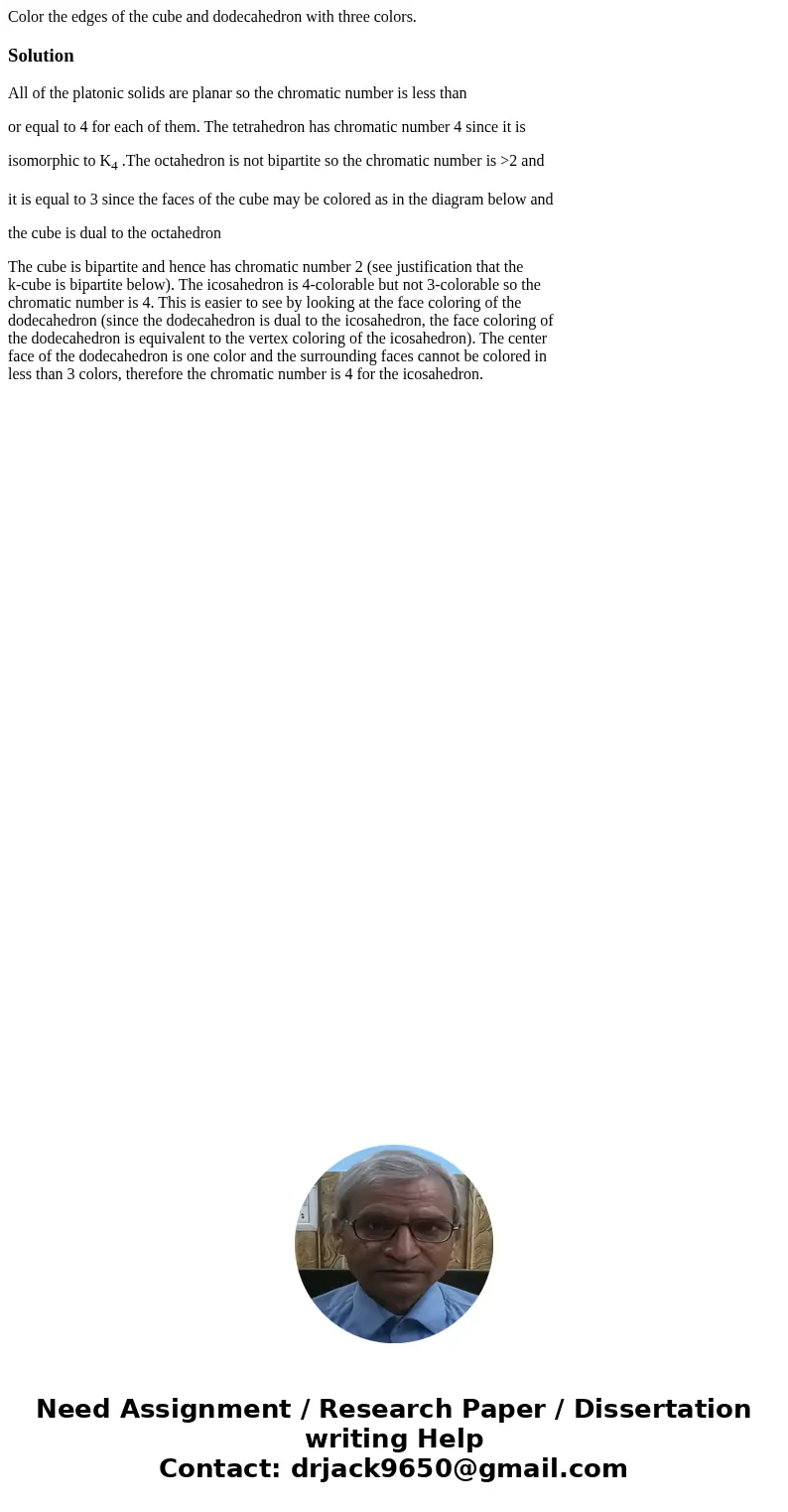Color the edges of the cube and dodecahedron with three colo
Color the edges of the cube and dodecahedron with three colors.
Solution
All of the platonic solids are planar so the chromatic number is less than
or equal to 4 for each of them. The tetrahedron has chromatic number 4 since it is
isomorphic to K4 .The octahedron is not bipartite so the chromatic number is >2 and
it is equal to 3 since the faces of the cube may be colored as in the diagram below and
the cube is dual to the octahedron
The cube is bipartite and hence has chromatic number 2 (see justification that the
k-cube is bipartite below). The icosahedron is 4-colorable but not 3-colorable so the
chromatic number is 4. This is easier to see by looking at the face coloring of the
dodecahedron (since the dodecahedron is dual to the icosahedron, the face coloring of
the dodecahedron is equivalent to the vertex coloring of the icosahedron). The center
face of the dodecahedron is one color and the surrounding faces cannot be colored in
less than 3 colors, therefore the chromatic number is 4 for the icosahedron.

 Homework Sourse
Homework Sourse